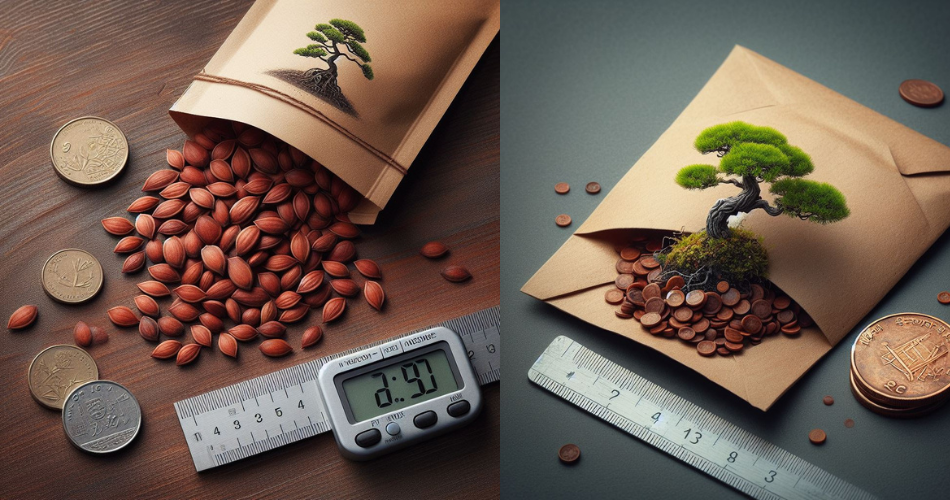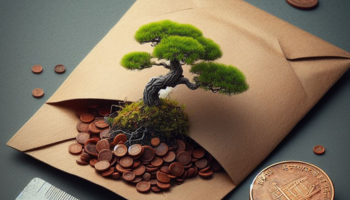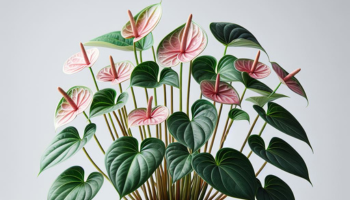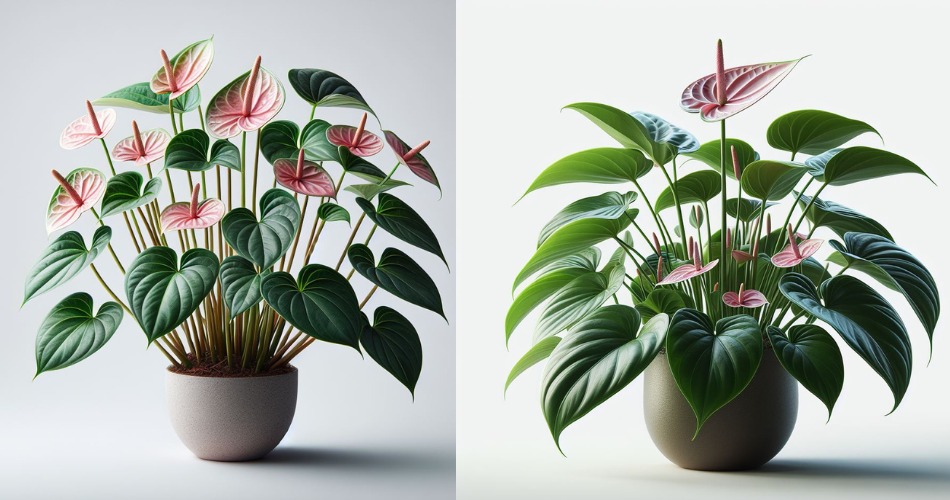
Welcome to our comprehensive guide on how to grow cherry blossom bonsai from seed. Cherry blossom bonsai, also known as sakura bonsai, is a captivating art form that allows you to cultivate the iconic beauty of cherry blossom trees in miniature form. These delicate and elegant trees hold immense cultural and symbolic significance, particularly in Japanese culture, representing the transient nature of life and the beauty of the changing seasons. In this article, we will delve into the step-by-step process of growing cherry blossom bonsai from seeds, from selecting the right seeds to nurturing and shaping the bonsai into a stunning masterpiece. Get ready to embark on a rewarding journey of cultivating your very own cherry blossom bonsai tree, bringing the enchanting beauty of blooming cherry blossoms into your home or garden.
1.1 What is Cherry Blossom Bonsai?
Cherry Blossom Bonsai is the beautiful art of cultivating cherry blossom trees in miniature form. By carefully nurturing these tiny trees, you can recreate the beauty and serenity of cherry blossom season right in your own home or garden.
1.2 The Cultural and Symbolic Significance of Cherry Blossom Bonsai
Cherry blossoms hold a special place in many cultures, particularly in Japan, where they are known as “sakura.” These delicate flowers symbolize the transient nature of life and the beauty of impermanence. By growing a cherry blossom bonsai, you’re not just cultivating a tree, but also embracing a meaningful tradition that has captivated people for centuries.
2. Selecting the Right Cherry Blossom Bonsai Seeds
2.1 Understanding Different Cherry Blossom Varieties
Not all cherry blossom trees are created equal. Different varieties offer unique characteristics, such as flower color, size, and growth patterns. Take the time to research and select a cherry blossom variety that resonates with you and suits your growing conditions.
2.2 Choosing High-Quality Cherry Blossom Bonsai Seeds
When it comes to growing from seed, quality matters. Look for reputable seed suppliers that specialize in bonsai or cherry blossom trees. Ensure that the seeds are fresh, viable, and properly stored to maximize your chances of success. Don’t be tricked into buying “mystery” seeds, or you might end up with a surprise garden gnome instead of a cherry blossom tree.
3. Preparing the Soil and Seedling Containers
3.1 Selecting the Appropriate Soil Mix for Cherry Blossom Bonsai
Cherry blossom bonsai thrive in well-draining soil that retains moisture without becoming waterlogged. A mix of organic bonsai soil, perlite, and coarse sand creates an ideal growing medium. Avoid using regular garden soil, as it can suffocate the delicate roots and lead to problems down the road.
3.2 Preparing the Seedling Containers for Planting
Choose shallow containers with sufficient drainage holes to accommodate the bonsai’s roots. Fill the containers with the prepared soil mix, leaving enough space for the seedlings to grow. Remember, we’re aiming for miniatures, not giants, so resist the urge to plant them in the equivalent of a mansion-sized pot.
4. Germinating Cherry Blossom Bonsai Seeds
4.1 Soaking the Cherry Blossom Bonsai Seeds
Prepare a cup of warm water and gently place your cherry blossom seeds in it. Let them soak for about 24 hours, giving them a luxurious spa treatment and encouraging them to shed their hard exterior. Don’t forget to play some relaxing spa music to set the mood!
4.2 Creating the Ideal Germination Environment
To give your seeds the perfect start, you need to create a warm and moist environment. You can achieve this by placing the soaked seeds in a plastic bag or seed tray covered with a clear lid or plastic wrap. Keep them in a cozy spot, like the top of your refrigerator or a sunny windowsill.
4.3 Planting the Cherry Blossom Bonsai Seeds
Once your seeds have sprouted tiny roots, it’s time to plant them in their prepared containers. Gently make a small hole in the soil for each seed and place them carefully, root-side down. Cover them lightly with soil, like tucking them in with a cozy blanket, and water gently. Now, all that’s left to do is wait patiently as your cherry blossom bonsai begins its journey from seed to stunning miniature tree.
Remember, growing a cherry blossom bonsai from seed requires patience, care, and a touch of whimsy. Enjoy the process, embrace any challenges that come your way, and celebrate the eventual blooming of these enchanting trees in your own miniature world.
5. Nurturing and Caring for Cherry Blossom Bonsai Seedlings
Growing cherry blossom bonsai from seed can be a rewarding and fulfilling experience. Once your seedlings have sprouted, it’s important to provide them with the care they need to thrive. Here are some essential tips for nurturing and caring for your cherry blossom bonsai seedlings.
5.1 Providing Proper Watering and Drainage
Watering is a crucial aspect of bonsai care, and cherry blossom bonsai are no exception. It’s important to strike a balance between keeping the soil moist and avoiding overwatering. Remember, cherry blossom bonsai prefer slightly moist soil, not waterlogged swamps!
To ensure proper drainage, place your bonsai pot on a tray filled with pebbles and water. This will prevent the roots from sitting in excess water, which can lead to root rot. A well-draining soil mix, composed of a combination of organic matter and inorganic materials like perlite or sand, can also help maintain the ideal moisture level.
5.2 Ensuring Adequate Sunlight and Temperature
Cherry blossom bonsai thrive in bright, indirect sunlight, so make sure to place them near a window or in an area that receives sufficient light throughout the day. However, be cautious of intense afternoon sunlight as it can scorch the delicate leaves.
In terms of temperature, cherry blossom bonsai prefer a cool to mild climate. Keep them away from drafts or extreme temperature fluctuations. If you live in a region with harsh winters, consider protecting your bonsai with a frost cloth or moving it to a sheltered location during the coldest months.
5.3 Fertilizing and Nutrient Requirements for Cherry Blossom Bonsai Seedlings
Feeding your cherry blossom bonsai seedlings with the right nutrients is essential for their healthy growth. During the growing season, which typically spans from spring to autumn, use a balanced liquid fertilizer diluted according to the manufacturer’s instructions. Apply it every two to three weeks to provide your bonsai with the necessary nutrients.
Remember, a little goes a long way when it comes to fertilizing bonsai. Overfertilization can lead to excessive foliage growth and weaken the overall health of your cherry blossom bonsai. So, be cautious and resist the temptation to turn your bonsai into a “monster tree” with an overdose of nutrients.
6. Pruning and Shaping Cherry Blossom Bonsai Trees
Pruning and shaping are essential aspects of bonsai cultivation, and they play a significant role in creating the desired aesthetic for your cherry blossom bonsai. Here are some tips to get you started on the path to bonsai artistry.
6.1 Understanding Pruning Techniques for Cherry Blossom Bonsai
Pruning helps maintain the shape and size of your bonsai while encouraging new growth. When it comes to cherry blossom bonsai, it’s best to prune during the dormant season, which is usually winter. Remove any dead or crossing branches, as well as any growth that compromises the overall design of your bonsai. Remember, less is more when it comes to pruning – only remove what is necessary to maintain the tree’s form.
6.2 Shaping and Training the Bonsai’s Structure
Shaping your cherry blossom bonsai is a creative process that requires patience and a vision for the final result. Use wire to gently guide the branches into the desired position. However, be cautious not to wrap the wire too tightly to avoid damaging the delicate branches. As the tree grows, regularly check the wire and adjust or remove it as necessary to prevent it from digging into the bark.
Remember, bonsai is a living art form, and your cherry blossom bonsai will continue to evolve over time. Embrace the process and enjoy the journey of shaping your miniature masterpiece.
7. Promoting Healthy Growth and Blooming of Cherry Blossom Bonsai
Ensuring the vigorous growth and beautiful blooming of your cherry blossom bonsai requires creating the right conditions and encouraging its natural tendencies. Here are some tips to help you promote healthy growth and abundant blossoming.
7.1 Providing the Right Conditions for Growth
Cherry blossom bonsai thrive in a well-ventilated environment with consistent temperatures and humidity. Avoid exposing them to extremes, such as hot, dry air or overly damp conditions. Maintaining a stable environment will help your bonsai focus on its growth and reduce the risk of stress-related issues.
Additionally, periodically check the roots of your bonsai to ensure they are not becoming pot-bound. If they are, consider repotting your bonsai in fresh soil to provide it with the necessary space to grow and thrive.
7.2 Encouraging Flowering and Blossoming
Cherry blossom bonsai are admired for their stunning flowers, so you’ll want to encourage their blooming potential. Providing a period of dormancy during winter can help stimulate flower production in the following spring. Ensure your bonsai receives the necessary chill hours by placing it in a cool location away from heating sources.
To promote flowering, some bonsai enthusiasts also use techniques like defoliation and pinching, which involve selectively removing leaves or bud tips. However, these techniques require knowledge and experience, so it’s best to consult a bonsai expert if you’re considering them.
8. Troubleshooting Common Issues in Growing Cherry Blossom Bonsai from Seed
Even the most experienced bonsai growers encounter challenges along the way. Here are some common issues you may face while growing cherry blossom bonsai from seed and how to tackle them.
8.1 Identifying and Addressing Pest Problems
Pests can be pesky little critters that disrupt the tranquility of your cherry blossom bonsai. The most common pests include aphids, spider mites, and mealybugs. Keep a keen eye out for any signs of infestation such as distorted leaves, webbing, or sticky residue.
If you spot any unwelcome visitors, there are various remedies available. For minor infestations, you can try wiping the affected leaves with a damp cloth or spraying a gentle solution of water and mild soap. However, for more severe cases, consider using organic insecticides or seeking advice from a local nursery or bonsai expert to identify the best course of action.
Remember, perseverance and a little TLC will help you overcome these hurdles and continue on your bonsai journey with grace and style. Happy growing!
By following the steps outlined in this article, you can embark on a fulfilling journey of growing your very own cherry blossom bonsai from seed. With patience, care, and attention to detail, you will witness the transformation of tiny seeds into magnificent bonsai trees that showcase the ethereal beauty of cherry blossoms. Remember to maintain proper care and continue learning about bonsai cultivation to ensure the long-term health and vitality of your cherry blossom bonsai. May your bonsai bring you joy, tranquility, and a deep appreciation for the beauty of nature.
FAQs
1. Can I grow cherry blossom bonsai from seeds, or is it better to start with a pre-grown tree?
While it is possible to grow cherry blossom bonsai from seeds, it requires patience and dedication. Starting with pre-grown trees or nursery plants can be a quicker and more reliable option for beginners. However, growing from seeds allows you to experience the entire lifecycle of the bonsai, from germination to maturity.
2. How long does it take for cherry blossom bonsai seeds to germinate?
The germination time for cherry blossom bonsai seeds can vary, but it typically takes around 2 to 3 weeks for the seeds to sprout. However, it’s important to note that cherry blossom bonsai trees can take several years to develop into mature, flowering specimens. Cultivating bonsai requires patience and a long-term commitment.
3. What are some common challenges or problems in growing cherry blossom bonsai from seed?
Some common challenges in growing cherry blossom bonsai from seed include low germination rates, fungal infections, improper watering, and pest infestations. It is crucial to maintain a sterile and controlled environment, provide appropriate care, and promptly address any issues that arise. Regular monitoring and research will help you overcome these challenges and ensure the health of your bonsai.
4. Can cherry blossom bonsai be grown indoors?
Cherry blossom bonsai can be grown indoors, but they require specific conditions to thrive. These include providing sufficient natural or artificial light, maintaining adequate humidity levels, and ensuring proper ventilation. While indoor cultivation is possible, placing the bonsai outdoors during the spring to experience natural sunlight and temperature fluctuations can encourage healthier growth and better blooming.



